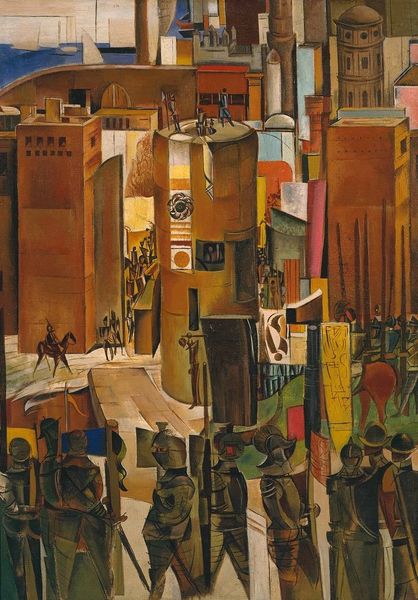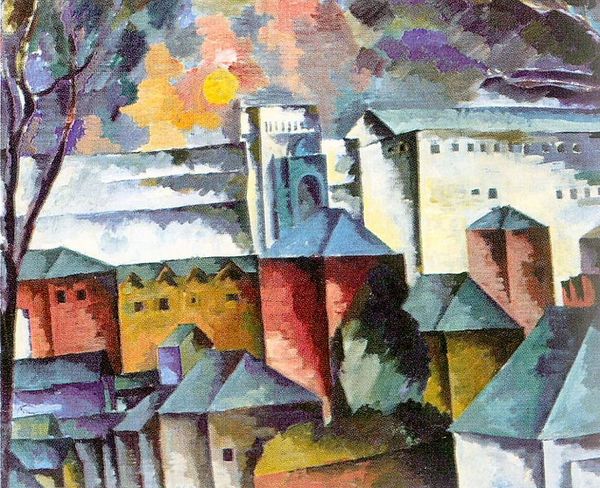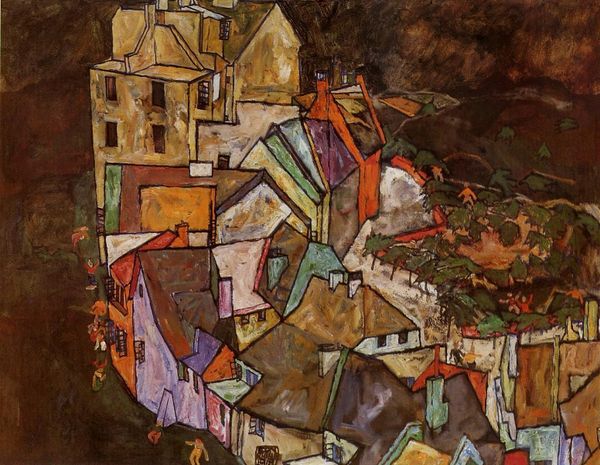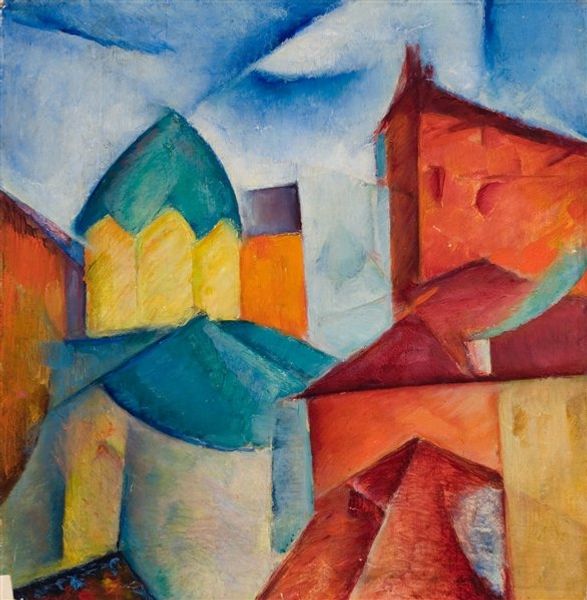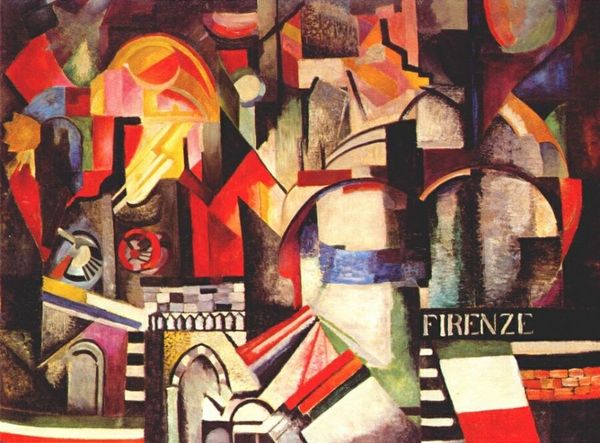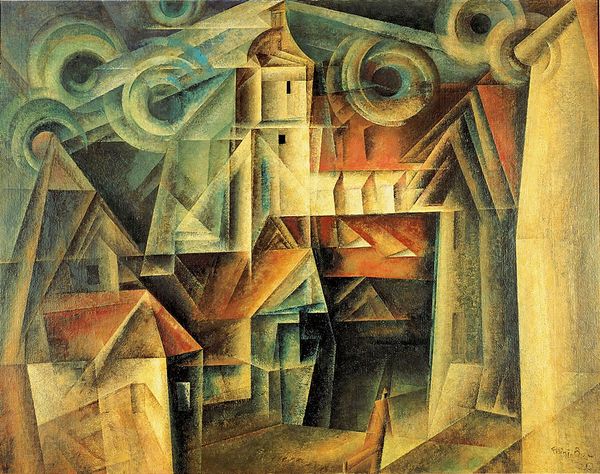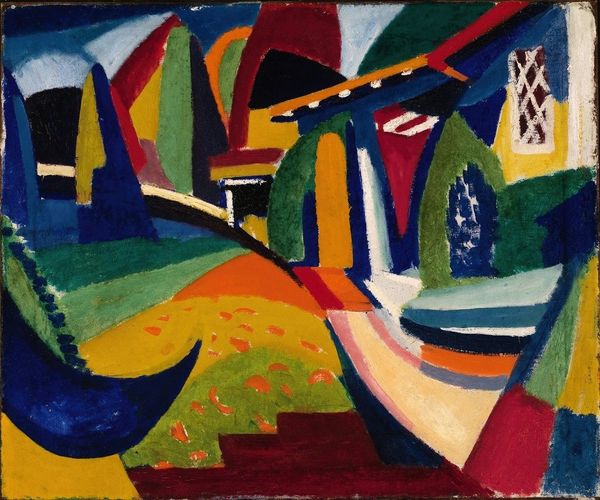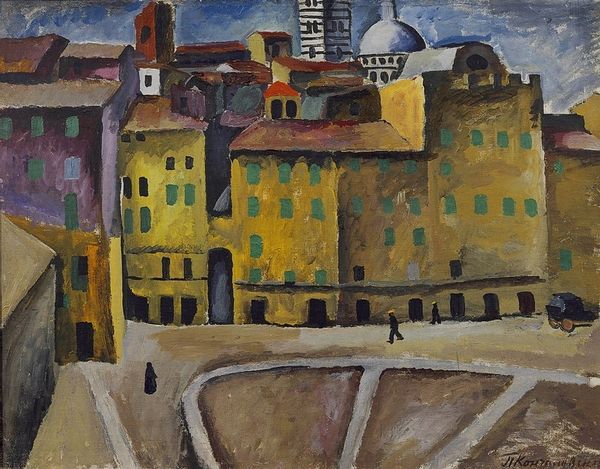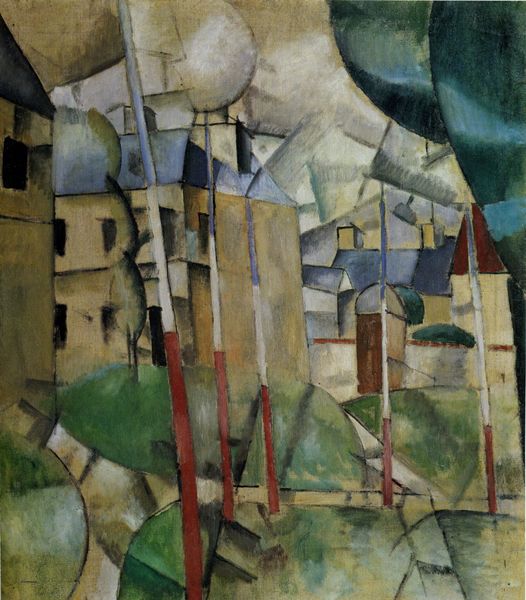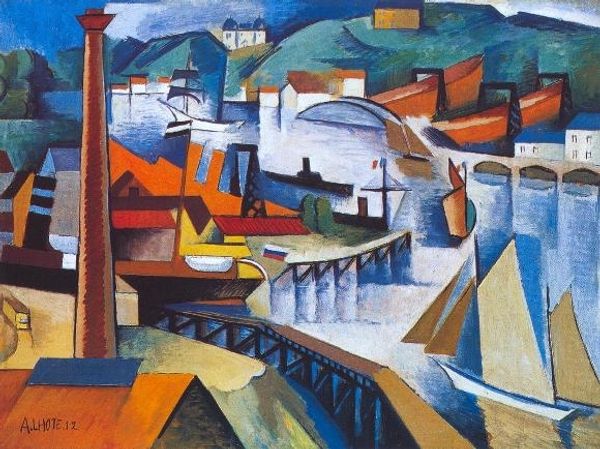
painting, oil-paint
#
tree
#
abstract painting
#
painting
#
oil-paint
#
landscape
#
house
#
possibly oil pastel
#
oil painting
#
geometric
#
expressionism
#
russian-avant-garde
#
cityscape
#
expressionist
#
building
Copyright: Public domain
Curator: Welcome! We’re standing before Aristarkh Lentulov’s "Landscape with dry trees and tall buildings," painted in 1920 using oil on canvas. Editor: It strikes me immediately as a kind of architectural Cubism – those stacked geometric forms suggesting buildings are dynamic, almost unstable. Curator: Lentulov was a key figure in the Russian avant-garde, blending influences like Cubism and Futurism with a distinctly Russian sensibility. Editor: Yes, the fractured shapes create visual rhythm, don't they? The red block stands out—dominating the picture plane with its simple square shape. Is there a specific meaning behind it? Curator: That vibrant red building likely symbolizes strength or perhaps even resilience during a turbulent time in Russian history. Consider that it looms large among muted earth tones and leafless trees which might signal the upheaval of pre-revolutionary Russian landscape. Editor: I see. The skeletal trees, then, could represent a kind of cultural pruning. It's interesting to see this expressed in such architectural forms, more like deconstructed city than the "landscape" referenced in the title. The sky, almost a jumble of color patches, lends another dimension. Curator: Notice also how Lentulov uses the oil paint. He juxtaposes planes with loose, expressionistic brushstrokes which bring a frenetic feel. Consider, too, the non-naturalistic colors he favors—red for strength and progress over drab nature; there is also an interest in the interaction and collision of different forms in relation to one another, like how a red square leans against a blue rectangle and what tension this creates in the image. Editor: Indeed! So, what starts as an abstract composition resolves into an expressionistic cityscape—a fascinating blend. Those "dry trees," then, feel like potent reminders of an unrecoverable past framing, and, being surrounded by, imposing geometrical buildings. Curator: In short, "Landscape with dry trees and tall buildings" reflects not only Russian modernism’s dialogue with Europe but also its attempt to forge new meanings through abstracted visual language and cultural symbols. Editor: What began as seemingly an explosion of colour and geometrical forms becomes something quite contemplative! Curator: Absolutely. It's the perfect marriage between Russian tradition and a vision of new society, painted onto canvas.
Comments
No comments
Be the first to comment and join the conversation on the ultimate creative platform.
